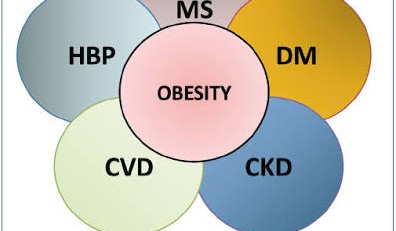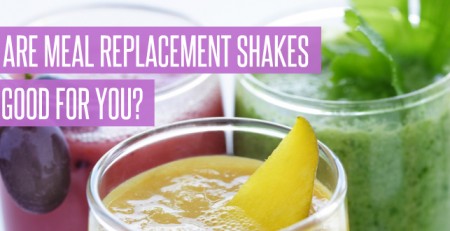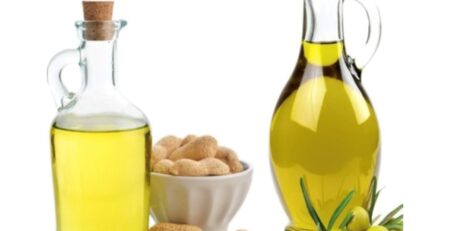Omega 3 Fatty Acids!
Health Benefits Of Omega 3 Fatty Acids!
Carbohydrates, proteins and fats are the three macronutrients of our nutrition.
Fats are composed of fatty acids.
Fatty acids are of four types, the monounsaturated fatty acids, the polyunsaturated fatty acids, the saturated fatty acids and the trans fatty acids.
Of these, the body can synthesise most of the fatty acids from other fatty acids, except the polyunsaturated fatty acids. Hence they must to be acquired from food. So they are also called the essential fatty acids.
Polyunsaturated fatty acids include Omega 3 and omega 6 fatty acids.
The omega 3 fatty acids are majorly of three types, namely the Eicosapentaenoic acid or EPA, docosahexaenoic acid or DHA and Alpha-linolenic acid or ALA.
Of these the DHA and EPA are the sea source or marine omega 3 and ALA is the plant source omega 3.
Marine algae are rich in the DHA and EPA.
Marine fish get the DHA and EPA from these algae.
We get DHA and the EPA fatty acids from these marine fish and ALA from plant sources, like walnuts, some oils like mustard oil and soy oil, flax seeds and flaxseed oil and leafy vegetables.
Seaweed, nori, spirulina, chlorella are some of the sea algae which contain DHA and EPA omega 3 fatty acids, but vegetarian people knowing about them or the chances of their being available and being consumed in India are slim.
Omega 3 are an important constituent of the cell membrane of all tissues of the body, they also have a role to play in the functioning of the receptors on the cell membrane and their genetic functions and in the formation of hormones essential for blood clotting, contraction and relaxation of the arterial walls and in the prevention of inflammation in the walls of the arteries.
Inflammation of the arterial walls leads to the development of arteriosclerosis or hardening and thickening of the arteries which lose their elasticity and this causes the blood pressure to go up.
This inflammation also causes atherosclerosis or development of plaques in and on the arterial walls.
This leads to narrowing of the arteries leading to heart disease, strokes and kidney disease depending upon which arteries are affected.
By preventing or reducing this inflammation, omega 3 help protect us against coronary artery (heart) disease and strokes.
They also help relieve the symptoms of metabolic syndrome.
They help lower blood pressure, regulate and lower the heart rate and improve the functioning of the arteries. They prevent irregular heart rhythm and arrhythmias, which accounts for majority of the cardiac deaths in the US and also kill lacs of people all over the world, every year.
DHA is also essential for the proper development of the brain and other parts of the nervous system of a baby from the first trimester of the mother’s pregnancy to the time the baby is two years old.
Marine omega 3 also help prevent ADHD and reduce the severity of asthma in children.
One large study (GISSI Prevention Trial) has found that heart attack survivors put on daily 1 gm supplement of omega 3 for three years were less likely to have another heart attack or stroke or die suddenly than those who took placebo.
In a recent Japan EPA Lipid Intervention Study (JELIS), it was found that those who took an EPA supplement along with statin (cholesterol lowering group of drugs) were less likely to suffer from a sudden cardiac event than those who took only statin.
So along with the evidence that they prevent heart disease and strokes, omega-3 fats have been shown to help control lupus, eczema, and rheumatoid arthritis, and may play protective roles in some cancer and other conditions.
Omega 3 are also beneficial for the health of the skin and the eyes.
By reducing inflammation, they help reduce acne lesions, improve hydration of the skin and help reduce redness, dryness and itching of skin in different conditions like dermatitis and psoriasis, helps relieve symptoms of sun burns due to ultraviolet A and B rays. They also help wound healing.
They are an important constituent of the structure of the retina and are essential for the health of the eye and vision. They are also linked to a reduced risk of macular degeneration which is one of the major reasons of blindness in the world.
They are also linked to lowered risk of depression and anxiety and relieve symptoms like sadness, lethargy and lack of interest in life and fear, panic and restlessness.
***
Are there any alternative sources of marine omega 3, DHA and EPA?
Unfortunately most of the health benefits of omega 3 are due to the marine omega 3, DHA and EPA.
The plant source omega 3 or ALA doesn’t have the same benefits.
A small amount of ALA is converted by our bodies into marine omega 3 at a slow pace, but this is not enough, so non fish eaters lose out on the benefits of marine omega 3, which are obtained only by eating marine fish.
Contrary to the claims made by some poultry industries, eggs of chicken fed on flax seeds do not have much marine omega 3.
So the only source of marine omega 3 remains marine fish or fish oil.
But the fact remains that purely vegetarian people too can live long and healthy life.
So don’t try to eat fish if you have never eaten it!
***
How much sea fish is enough to get adequate omega 3 fatty acids DHA and EPA?
Adults should eat about 170 gm sea fish twice a week and children between the ages of 2 to 8 years between 40 to 85 gm and children over 9 years between 115 to 140 gm twice a week to get enough of the two omega 3 fatty acids.
***
How to cook fish to preserve more of the omega 3 available in the fish?
Boiling, steaming or cooking fish in a gravy, or baking it at 200 degrees for 20 minutes or smoking fish (not a common practice in India) can preserve much of the omega 3 in fish.
Cooking fish in a microwave at 200 degrees or lower temperature can also help retain most of the omega 3 intact.
The key to keeping the healthy omega 3 in your sea fish intact on cooking appears to be cooking it at a lower temperature than about 200 degrees and cooking it quickly in about 20 minutes, may even be at a lower temperature if for a little longer time frame.
Higher temperatures and longer cooking time completely alters the chemical structure of the fatty acids in the fish so it doesn’t resemble the original chemical structure of the fish lipids. High heat also helps develop the very harmful trans fatty acids and some other toxic substances in fish.
Deep frying or pan frying fish or cooking it in a tandoor are all done at high temperature which destroys most of the omega 3 in fish
Canning fish also destroys much or most of the omega 3 in fish.
Also read the articles ‘Basics Of Nutrition’, ‘The Good And The Bad Fats’ and the ‘Effect Of Cooking On Omega 3 In Fish’ on this website.

















Leave a Reply